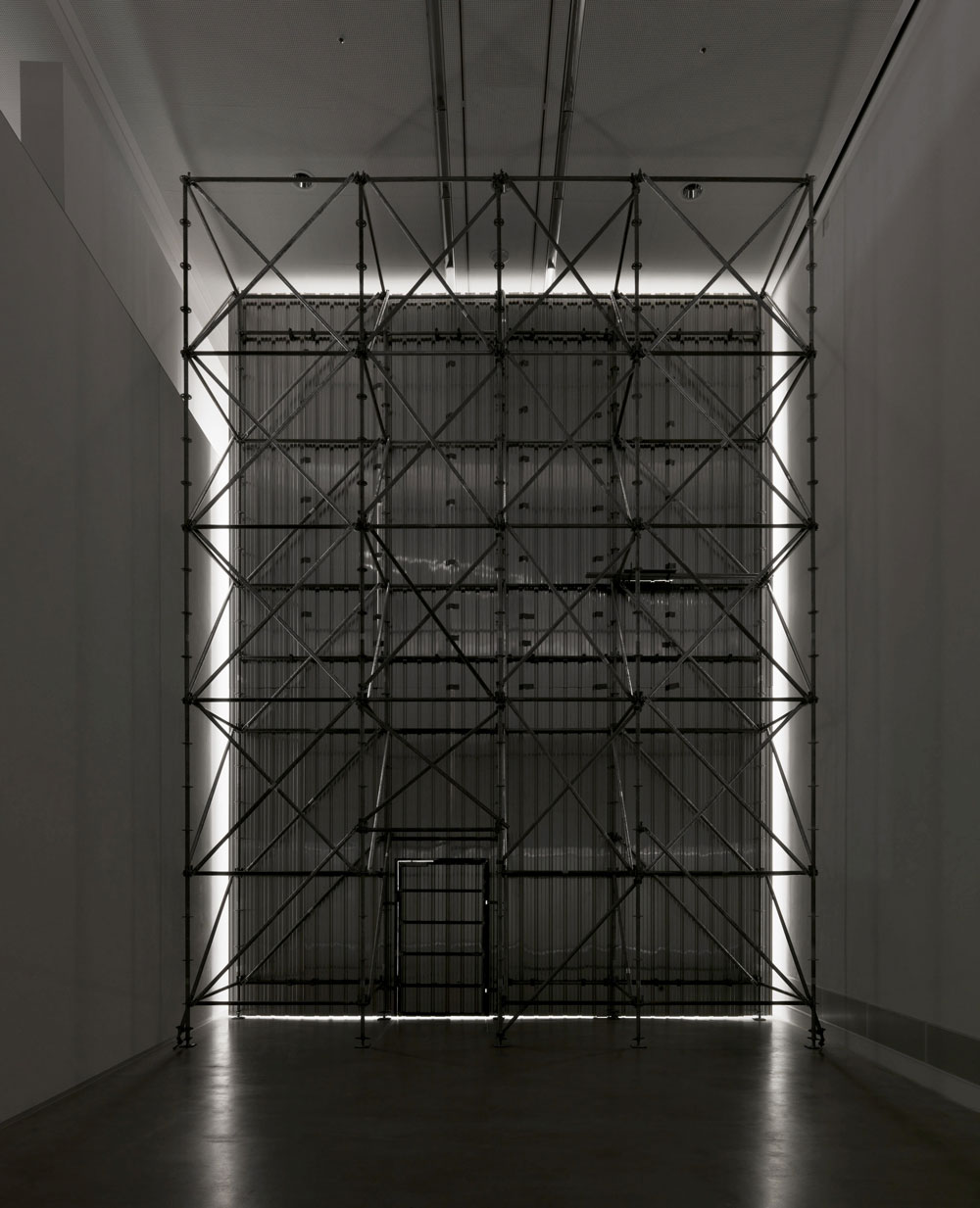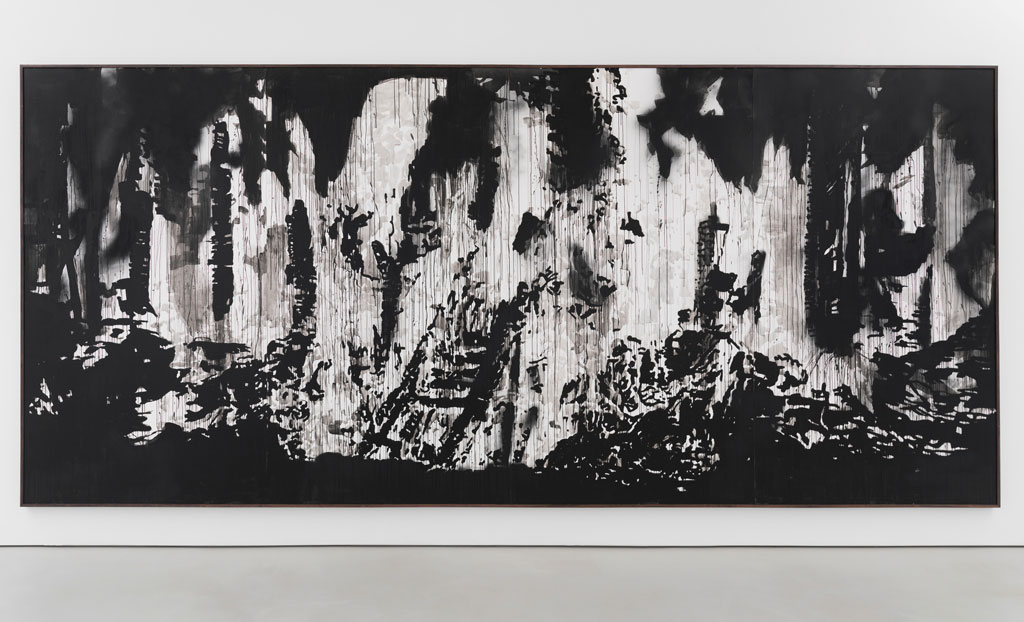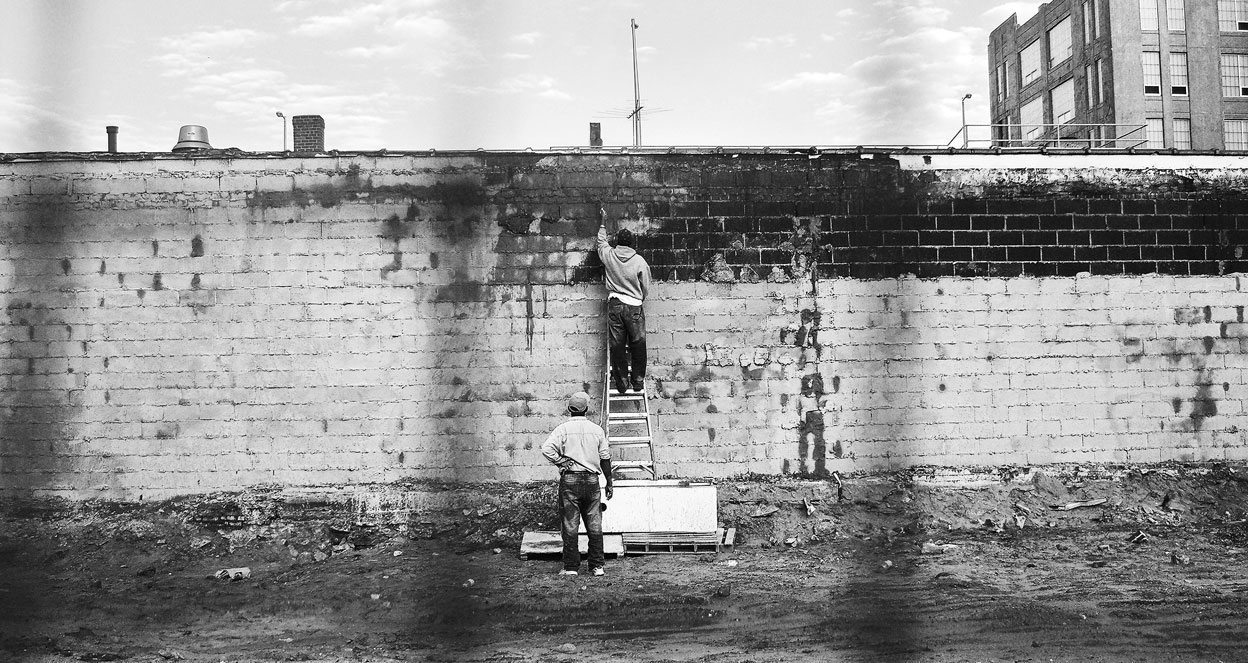ART CITIES:Vienna-Monica Bonvicini
 Since the mid-1990s Monica Bonvicini has been exploring political, social and institutional situations and their impact on society as well as on the conditions of artistic production. Her work is direct, merciless, political and not without a (wry) sense of humour. In the process she focuses on the relationship between architecture, gender roles, control mechanisms and dispositifs of power. Bonvicini has a multimedia approach and uses drawing, sculpture, installation, video and photography in equal measure.
Since the mid-1990s Monica Bonvicini has been exploring political, social and institutional situations and their impact on society as well as on the conditions of artistic production. Her work is direct, merciless, political and not without a (wry) sense of humour. In the process she focuses on the relationship between architecture, gender roles, control mechanisms and dispositifs of power. Bonvicini has a multimedia approach and uses drawing, sculpture, installation, video and photography in equal measure.
By Dimitris Lempesis
Photo: Belvedere 21 Archive

Monica Bonvicini for her solo exhibition “I Cannot Hide My Anger” has developed a site-specific and space-consuming installation that engages with the architecture of Belvedere 21. Here, the artist is less interested in the formal and technical aspects of the architecture than in the social and political power structures that are expressed in the constructed space and have an impact on people. Monica Bonvicini’s work is “political” and deeply rooted in contemporary society. The artist questions, sometimes violently, the traditional power structures governing male-female relationships and methodically deconstructs social, cultural, and identity-based systems of values. She thus undertakes a critical analysis of architecture, its codes and representations, in terms of sexuality: “I Believe in the Skin of Things as in that of Women” (1999), a title borrowed from a quote from Le Corbusier, consists of a plasterboard space whose walls bear citations from famous architects, juxtaposed with caricatured and sometimes obscene drawings that ridicule the great masters of modernism. Physical destruction is sometimes added to the moral destruction, as in “Hammering Out (an old argument)” (1998), a filmed performance showing a woman’s arms striking a wall with the blows of a hammer, or “Plastered” (1998), a fake floor covering an exhibition space, destined to be destroyed by the flow of visitors. Without being truly participatory, Bonvicini’s creations involve spectators in a particular process, from which they are sometimes rejected, but for which they remain the target. In this way, while the inscriptions in light bulbs and mirrors in “Not For You” (2006) address visitors, they also leave them out. The body in a space, in a building, within a given environment, constitutes one of the problematics that the artist develops throughout her work. While architecture constitutes a field of questioning of power relations that reveals a male-female power imbalance, from the 2000s, the artist has diversified her research, focusing on other forms of domination, such as the practice of sadomasochism, appropriating its characteristic elements – black leather and steel chains – which she combines with metal grids and shattered glass, subverting all of this in service to powerful and sardonic stagings (“Never again” (2005) “Identity Protection” (2006). Leather thus becomes an emblematic material in many of her artworks ( “Black You” (2010); “Leather Chainsaw” (2004); “Leather Tools” (2009), as do steel chains (“Black” (2002); “Knotted (big)” (2004); “Stairway to Hell” (2003); and “Scale of Things [to come]” (2010). Whether defined by their absence or presence, women play an important role, especially in performances that denounce masculine hegemony (“Hausfrau Swinging” (1997); “Wallfuckin” (1995-96). Through her approach, the artist develops a discourse that falls within the legacy of the feminist movements of the 1970s, such as the Feminist Art Movement, a very active group whose aim was to fight sexism. However, here it is not so much a matter of taking up a position in favour of women as it is of deconstructing the traditional relationships between the sexes within society. In her works, the woman is therefore not considered an object of desire or categorised by a series of clichés. For M. Bonvicini, women are a potentially destructive force, capable of destabilising authoritarian structures and overthrowing masculine domination, sometimes becoming the dominant party themselves.
Info: Curator: Axel Köhne, Belvedere 21, Arsenalstrasse 1, Vienna, Duration: 28/6 27/10/19, Wed & Sun 10:00-21:00, Thu-Sat 11:00-18:00, www.belvedere.at



